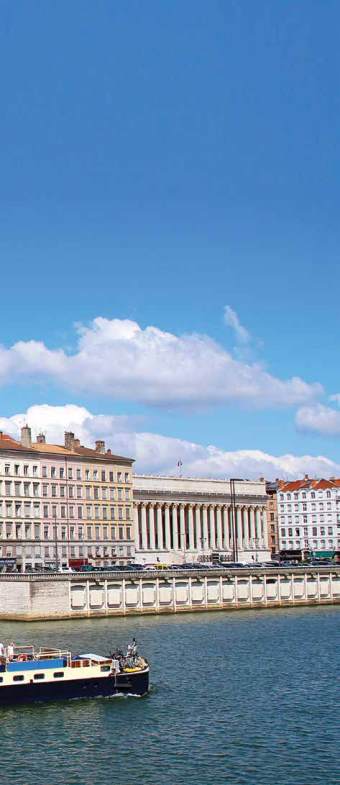Basic HTML Version

winter
|
spr ing
71
Life on a canal, especially life onboard a boat such as
Aprés Tout, which can accommodate six passengers in three
equal-size staterooms, with its four-person crew, is both a
leisurely and luxurious way to explore this part of France, in a
way that you’ve most likely
never
– unless you are among the
most experienced of travelers – explored before. Bourgogne is,
without exaggeration, the gastronomic and oenological center of
the universe.
To call our average speed of 4.5 kilometers (2.7 mph) per
hour “leisurely” is an understatement. One can walk beside the
Aprés Tout at any time of the day and keep up with the craft
without breaking a sweat. We went through some 55 locks during
our nearly weeklong excursion, and each lock takes about 15
minutes to navigate. If you don’t care to walk or cruise, you can
hop on one of the six bicycles on board and accompany the
boat along the ever-present trail beside the canal. The speed
limit on any of the canals in France is 6 kph (3.73 mph), though if
one transits to the actual river, boats are allowed to move at the
nearly hair-raising speed of 35 kph (nearly 22 mph).
The best (and most expensive) wines in the world, both
red and white, are made in Burgundy. Romanée-Conti Grand
Cru, the region’s great red wine (made with primarily Pinot Noir
grapes), traces its origins back to 1131 (though it likely was a
favored wine-growing region in the days of the Roman Empire
600 or 700 years earlier) and sells for upward of 7,000 euros
a
bottle
at auctions; the supply – grown and harvested on just
four
acres
(1.63 hectares) of prime grape-growing land – is
extremely
limited. It is France’s most illustrious wine. In October of this year
(2014), for example,
Forbes
magazine reported that Sotheby’s
auctioned off a 114-bottle set of Romanée-Conti Grand Cru for
$1.6 million.
Twenty kilometers or so west of Domaine de Romanée-
Conti, Burgundy’s great white wine, Montrachet Grand Cru
(100-percent Chardonnay), is grown; it is renowned worldwide as
the finest dry white wine in existence. Its heritage can be traced
at least as far back as 1252, but it too could go back much further.
Other names you may be familiar with – especially if you have
the Interstate across the U.S. But you’ll miss most of the fun; you’ll miss
the
real
small-town America.
And, traveling via canal through Burgundy is perhaps the best
way of seeing the
real
France. The France of small towns and villages,
cobblestone streets, stone cottages with red-tile or slate roofs, fresh
baguettes and croissants at 5 am, farmers markets featuring pigeons,
ducks, geese, and other game hanging upside down, quite dead; the
colors of herbs, spices, vegetables, legumes, freshly picked flowers,
saucisson
, and a variety of local cheeses arrayed along the
quais
for sale
stick to the memory. Though the sweet (or acrid depending upon your
sensibility) smell of Gauloise and Gitane no longer lingers in the air as
it once did, old men with red noses and blue overalls continue to prevail
over the cacophonous buying and selling.
If discovering Bourgogne via its canals
isn’t enough for you, Aprés Tout also
conducts a river cruise that sails from St.
Jean-de-Losne along the River Saône
through the cities of Chalon, Tournus,
Macon, Montmerle in the Beaujolais
region, and finally Lyon (pictured). At
the end of this cruise, you’ll return to
Paris via the TGV.

